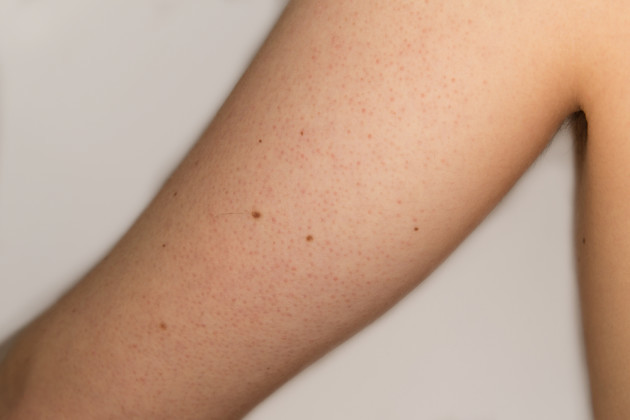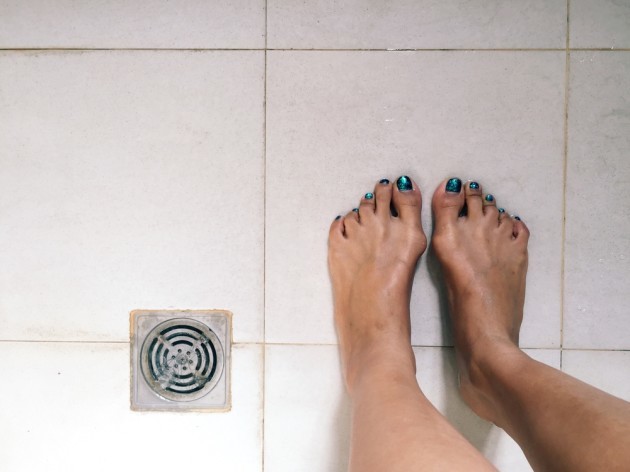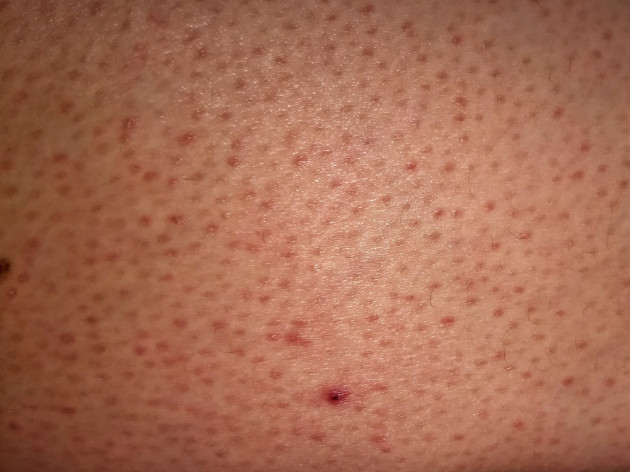KERATOSIS PILARIS, OR KP as it is also known, is a skin condition which affects approximately 40 per cent of the population to some extent.
Characterised by tiny pink or red bumps that appear predominantly on the upper arms and upper legs, KP can put a real dent in a person’s confidence.
Seeking to conceal certain parts of the body and embarking on rigorous skin regimes to lessen the severity of the skin’s appearance is part and parcel of daily life for many people who live with KP.
And yet unlike other skin conditions such as acne, psoriasis or roscea, KP is rarely alluded to within beauty content.
Indeed, I have had a mild form of the condition since childhood, and only learned of its name at the age of 25.
It is understood that the condition is due to an excessive build up of keratin around the hair follicles, and is often exacerbated in winter due to harsher weather conditions, and while it cannot be cured or prevented, its appearance can be treated.
DailyEdge chatted with Jennifer Rock, aka TheSkinNerd, who gave us her expert insight into the do’s and dont’s of caring for KP.
A qualified beauty and dermal therapist, Jennifer, who established an online skin community, has travelled the world lecturing on skincare to fellow therapists, nurses and doctors, and has gathered a wealth of knowledge, so, naturally, we wanted the 411 on KP.
“When it comes to KP, I believe it requires a multi-pronged, 360˚ approach as it is not a temporary condition, it’s a continuous affliction,” Jennifer explained.
So, where do you start?
According to Jennifer, it’s important to work from the inside out.
Taking omegas and vitamin A supplements help to bring the skin to its healthiest and can assist as vitamin A is believed to play a role in the keratinisation process. It is thought that KP is the result of an overproduction of keratin within the skin so if this can be normalised from within, it can help with the appearance on the outside.
When it comes to topical products, keep an eye out for exfoliating acids (AHAs, BHAs & PHAs) like lactic acid, glycolic acid, salicylic acid and gluconolactone. IMAGE Skincare’s Body Spa Rejuvenating Body Lotion contains glycolic acid to help to exfoliate dead skin cells and reduce the bumpiness as well as vitamin A and vitamin C.
Upon learning the name of the condition five years ago, I set about researching ways to treat it and was ultimately met with conflicting advice, especially when it came to exfoliating the problematic areas.
“Exfoliation is actually essential when it comes to keratosis pilaris – it’s mechanical exfoliation that is a no-go,” Jennifer clarifies. “I never like or endorse mechanical exfoliation (scrubs, exfoliating gloves, etc.) as they can cause micro-tears on the surface of the skin.”
Exfoliation with acids like lactic acid, glycolic acid and salicylic acid will greatly assist with the “traffic jam” of dead skin cells in the pore. Everything in moderation – limit exfoliation to once or twice a week!
Unsurprisingly, fake tan is a firm favourite among KP sufferers as it often helps to even out the skin tone, but it doesn’t come without its down sides, with some brands indirectly highlighting the texture of the skin.
“If a fake tan is highlighting skin texture, it is too drying for your skin and you need something that hydrates your skin rather than dehydrates it,” Jennifer says.
The TanOrganic Self Tan Oil is packed with nourishing oils like argan oil and borage seed oil and gives a very natural finish that fades out like a real tan would.
Jennifer also recommends the brand’s other products as the formulations are slightly different and they contain very “skin-friendly ingredients” like aloe vera and chamomile.
So, there you have it; work from the inside out, pay attention to the active ingredients in the products you choose and remember that some self-tanners will actually work against you.




